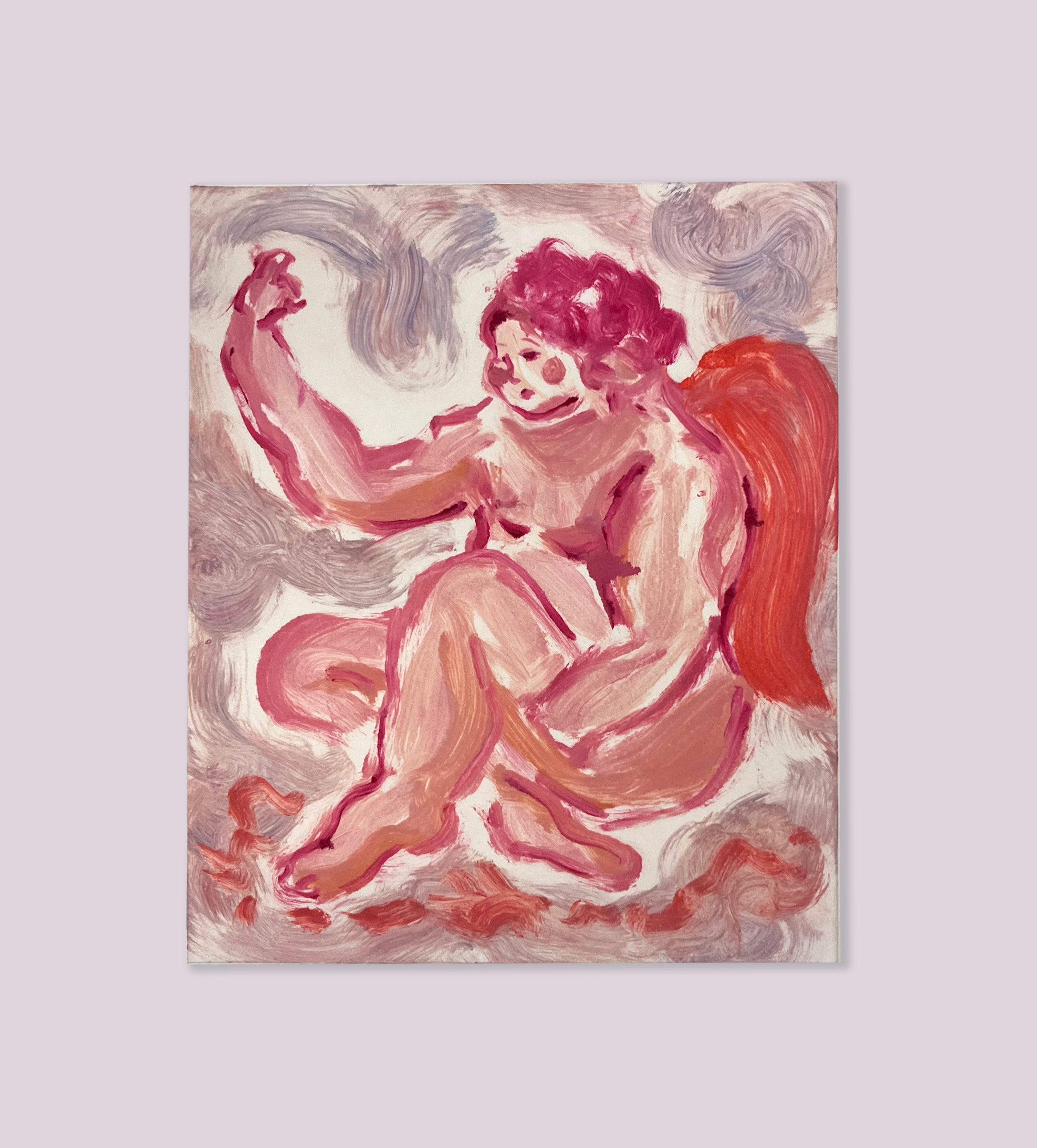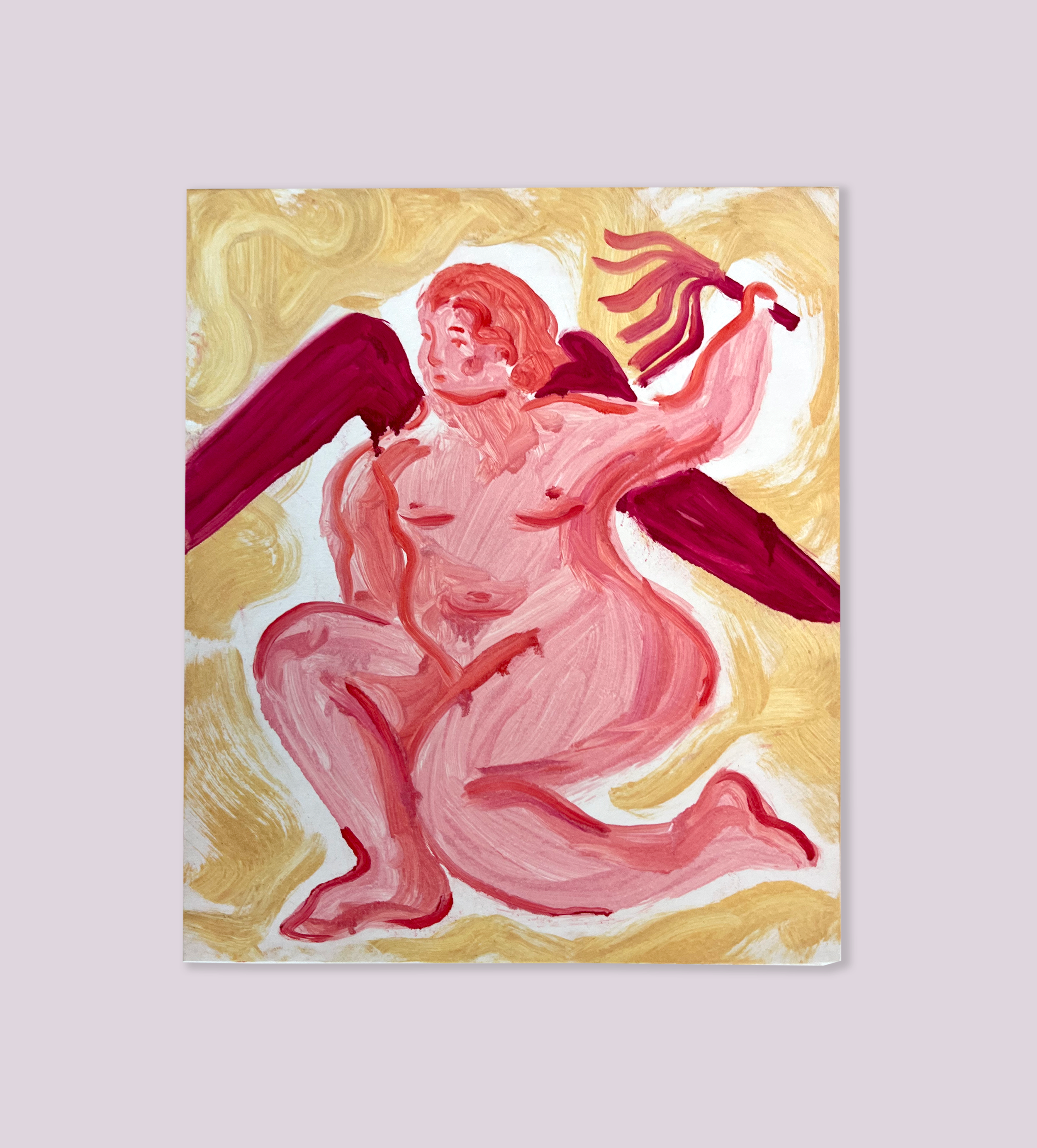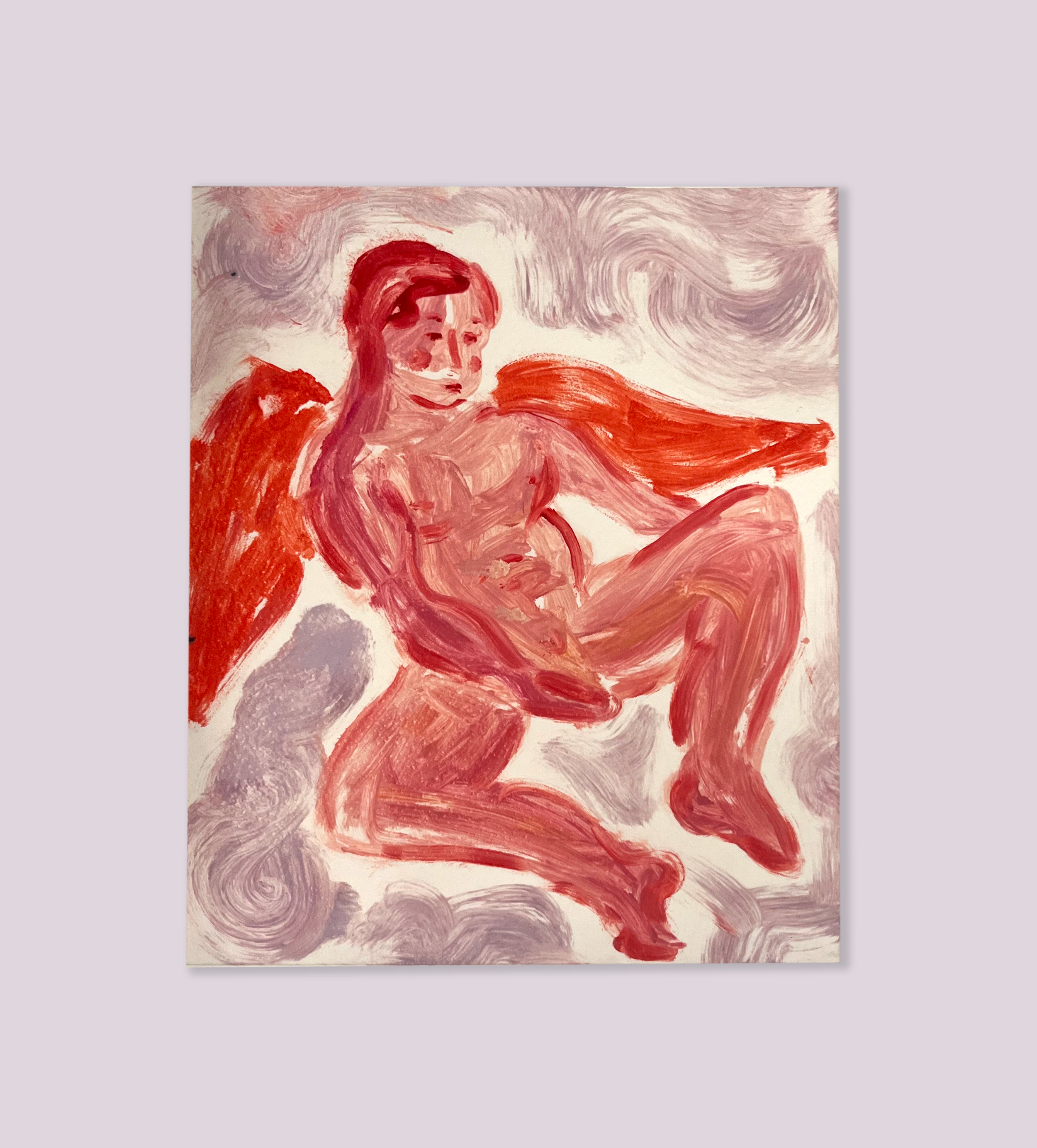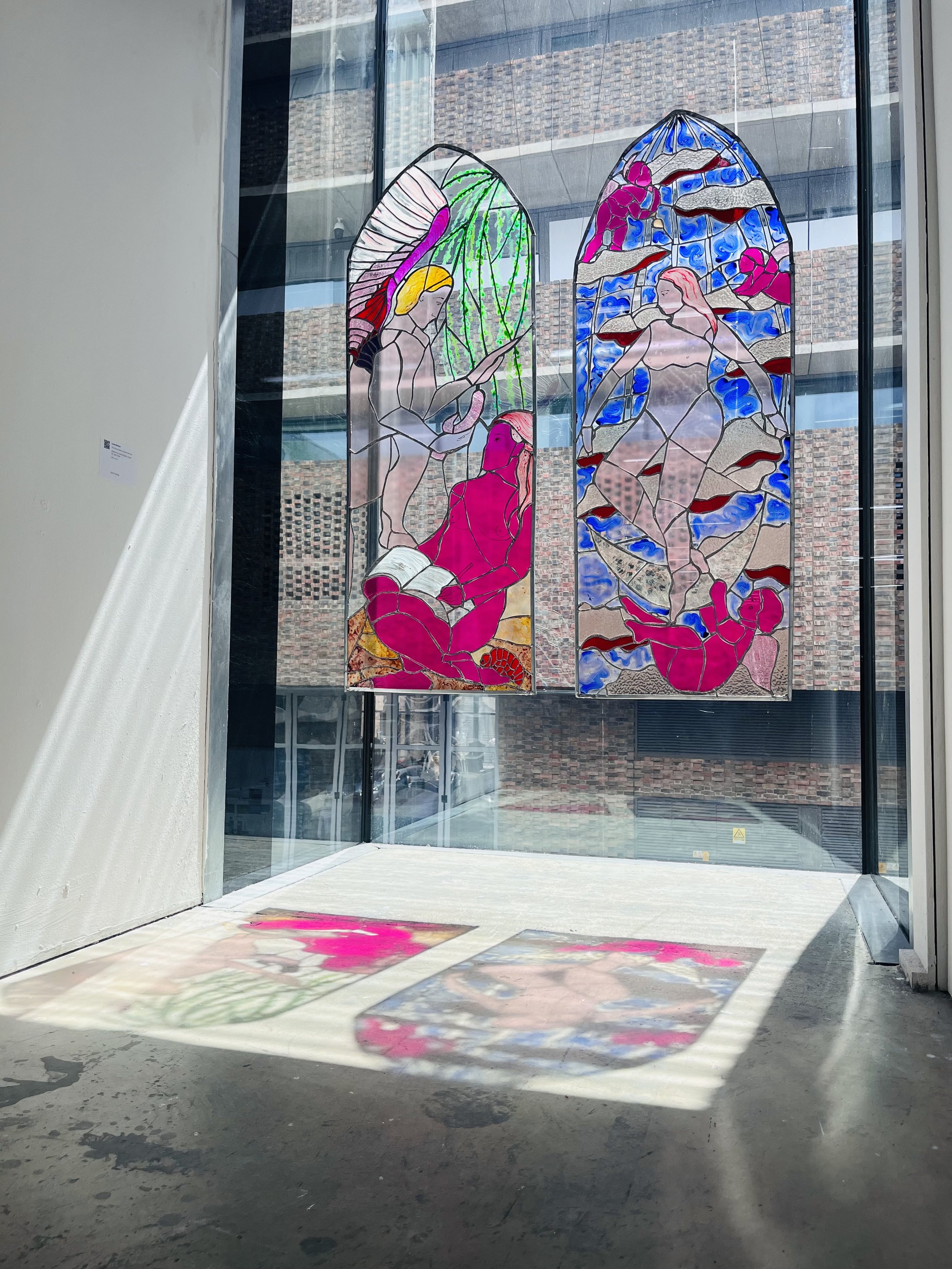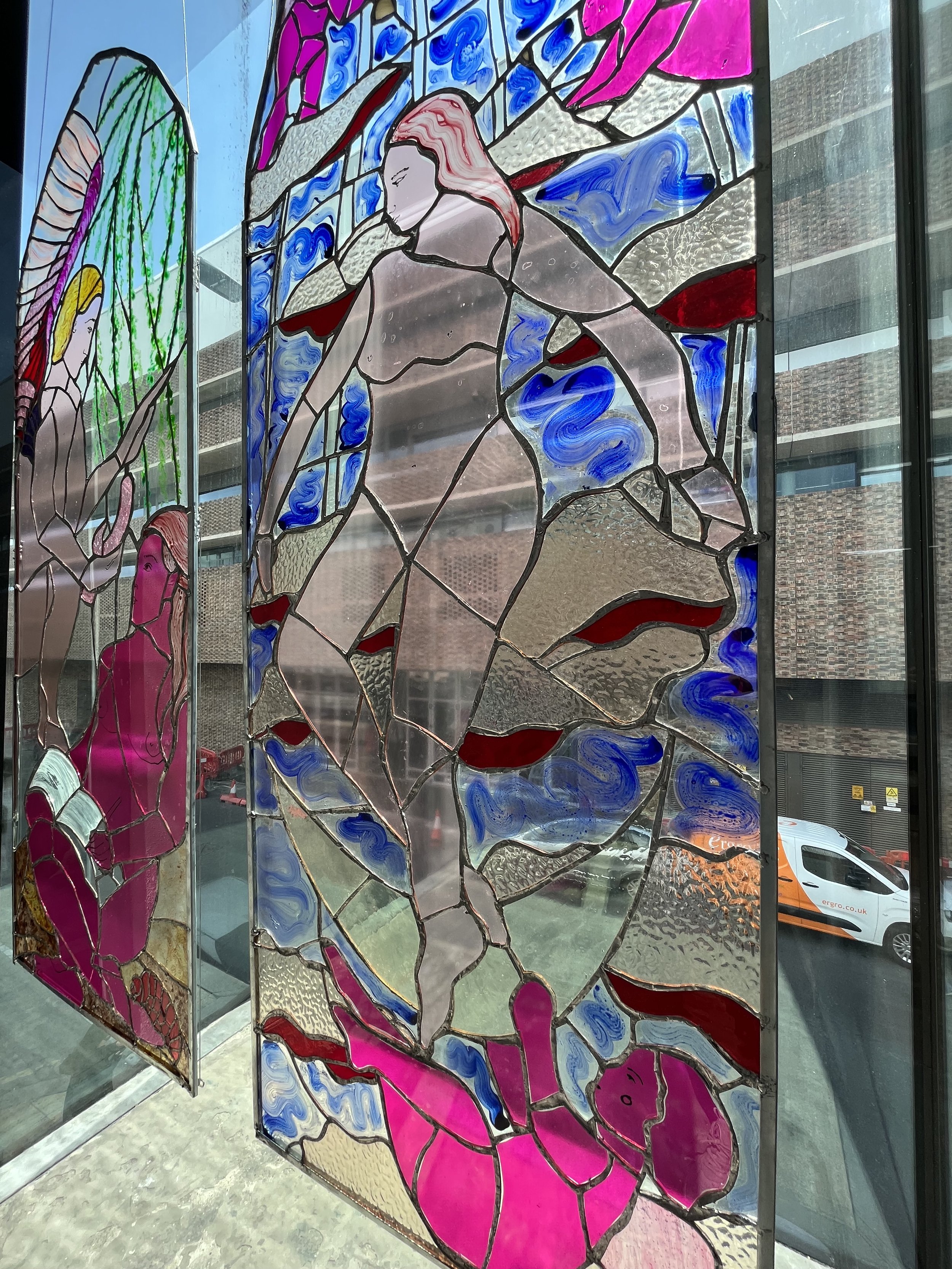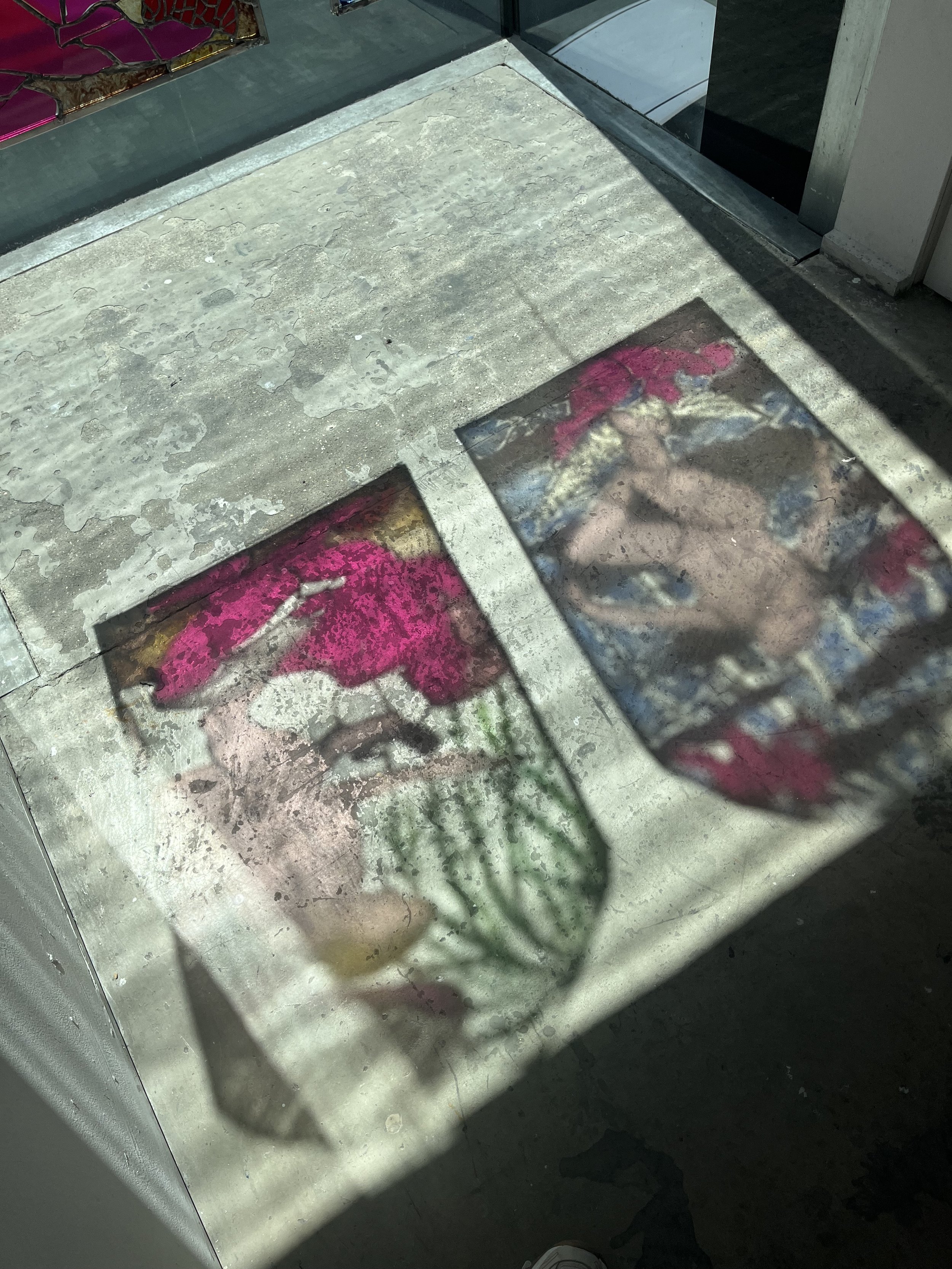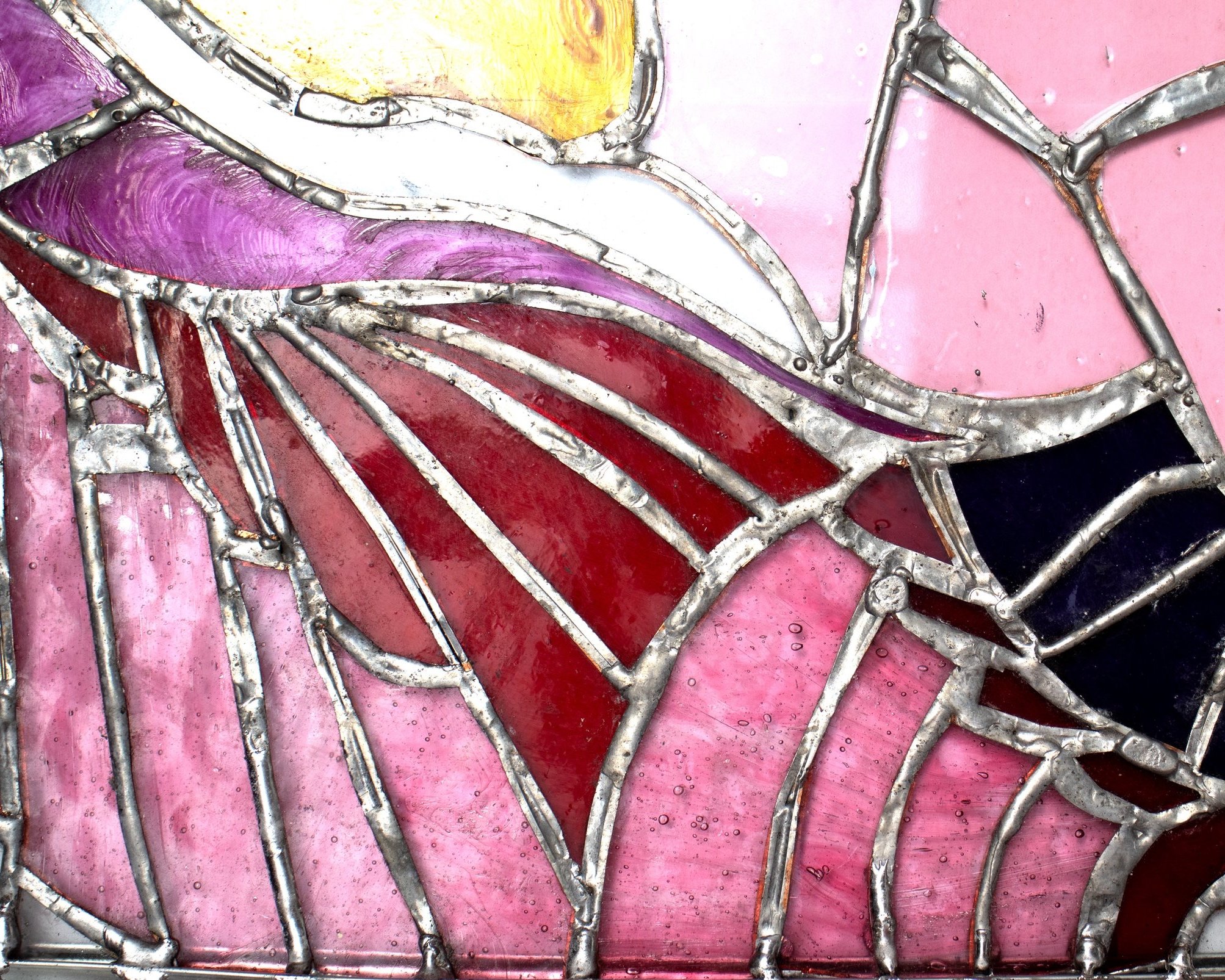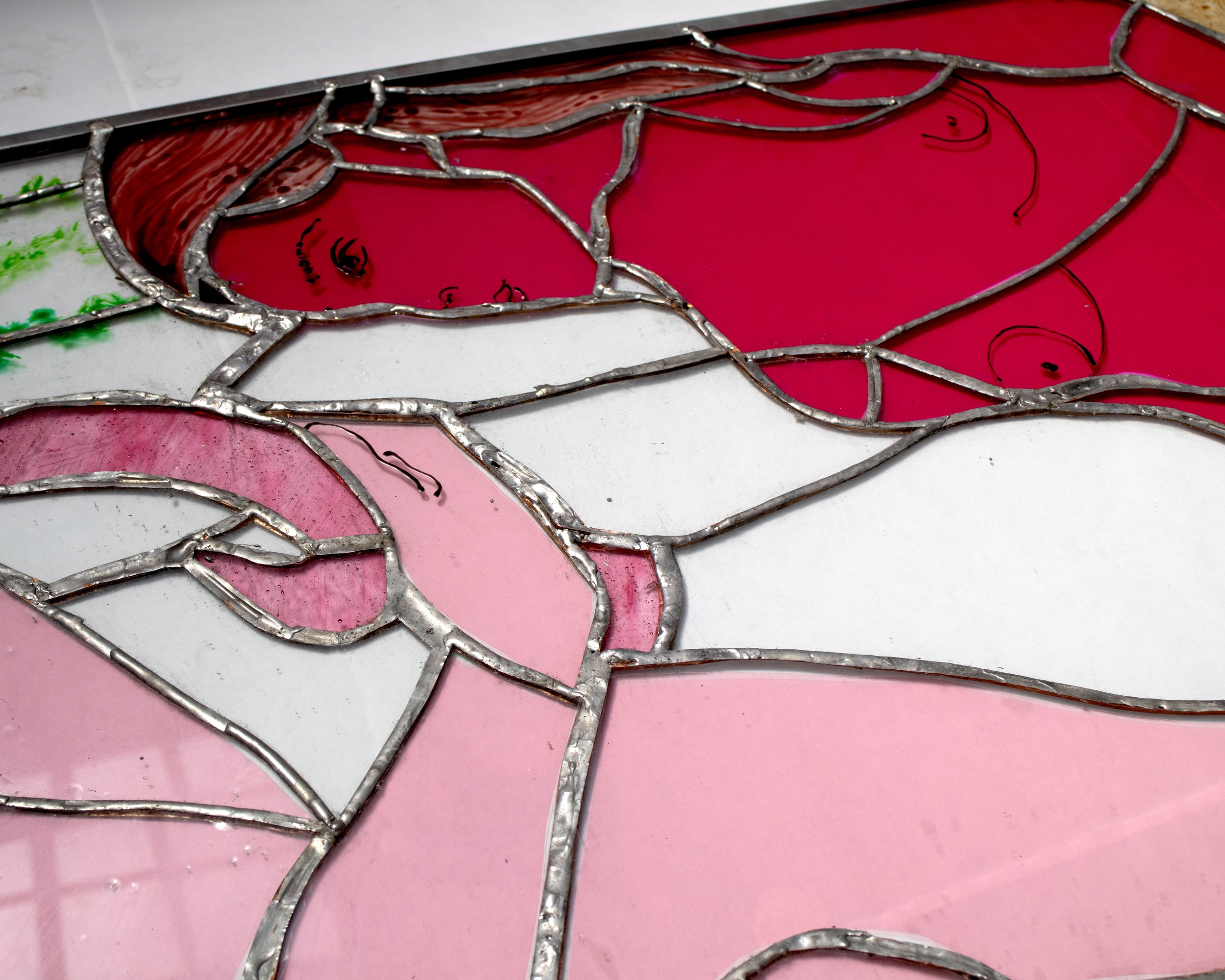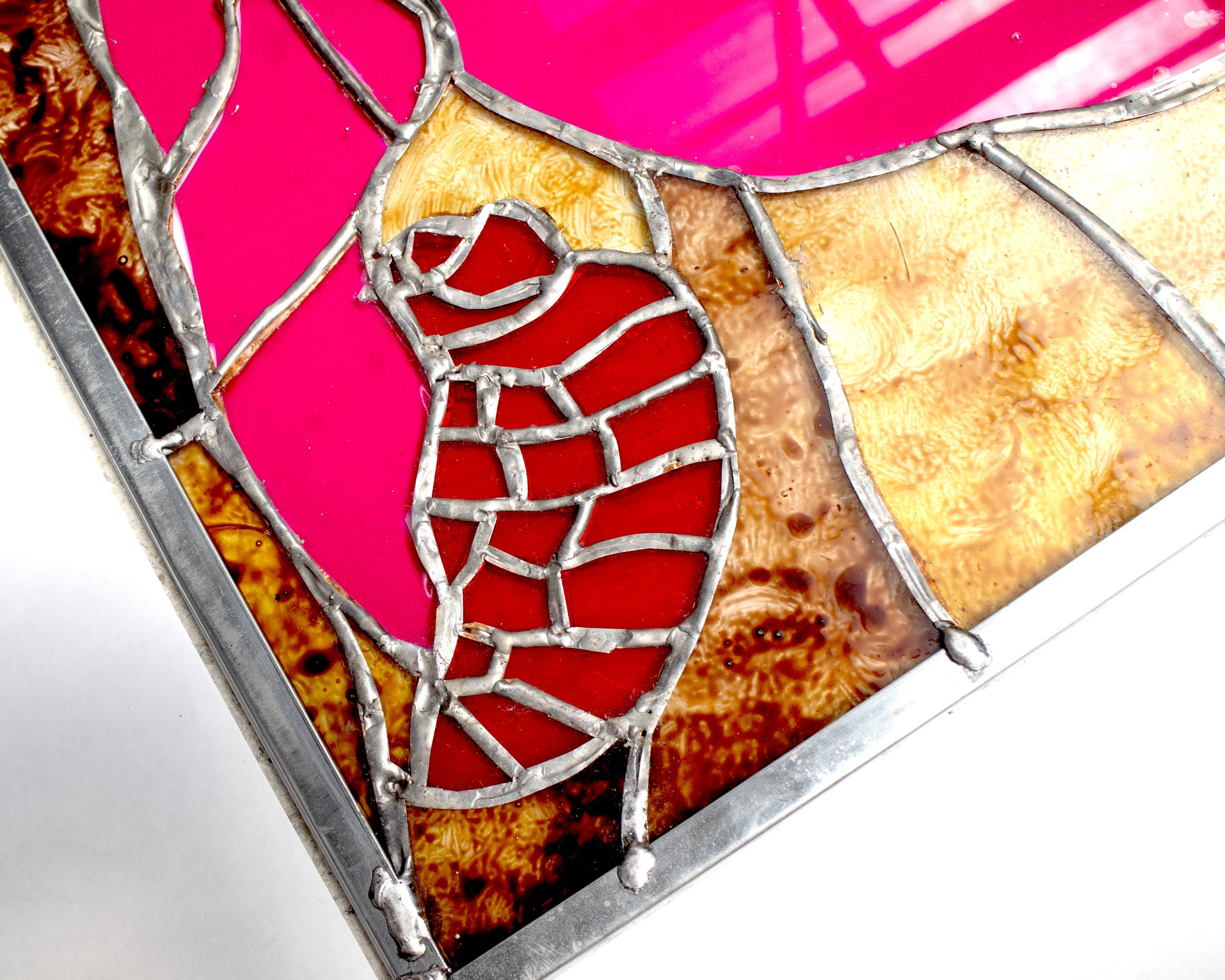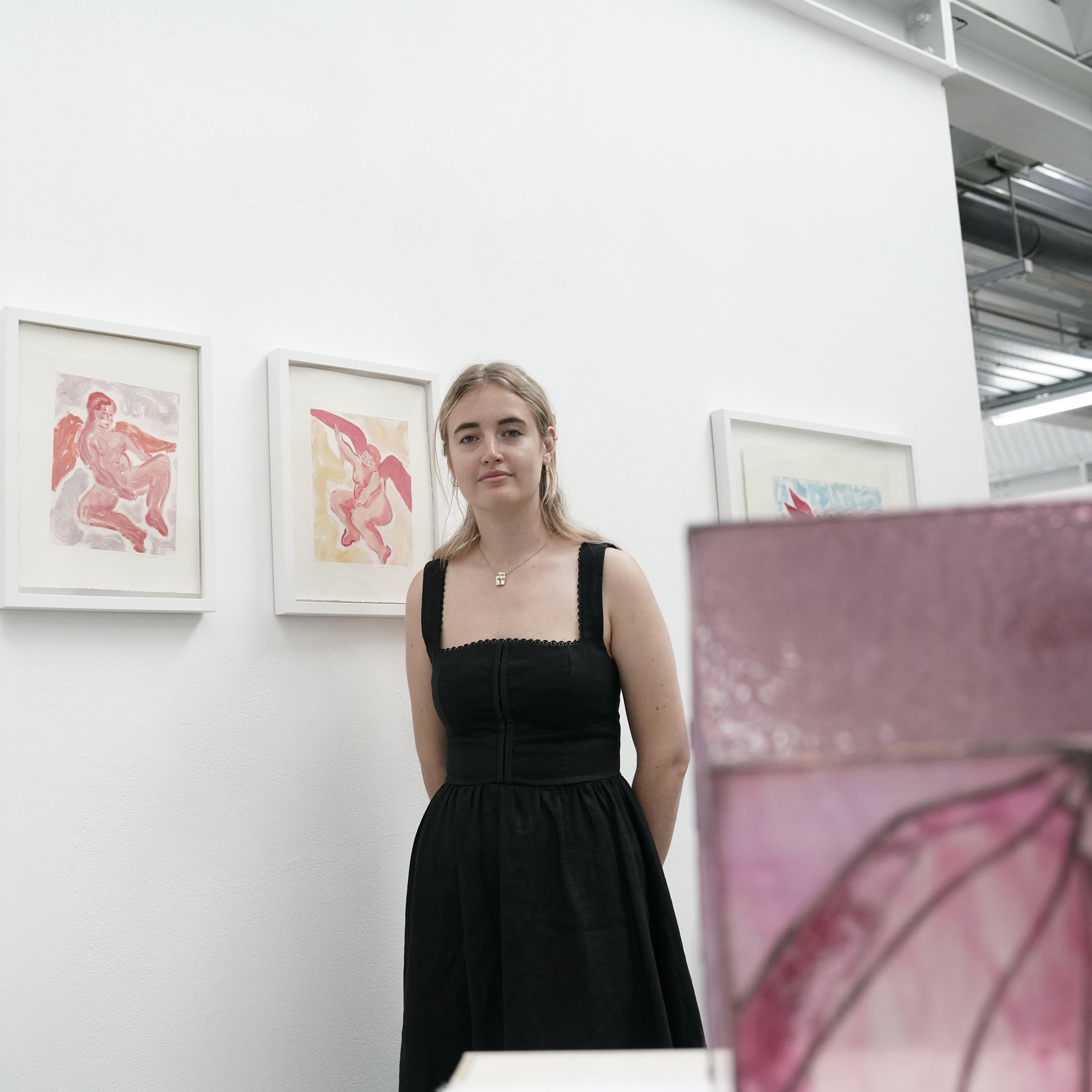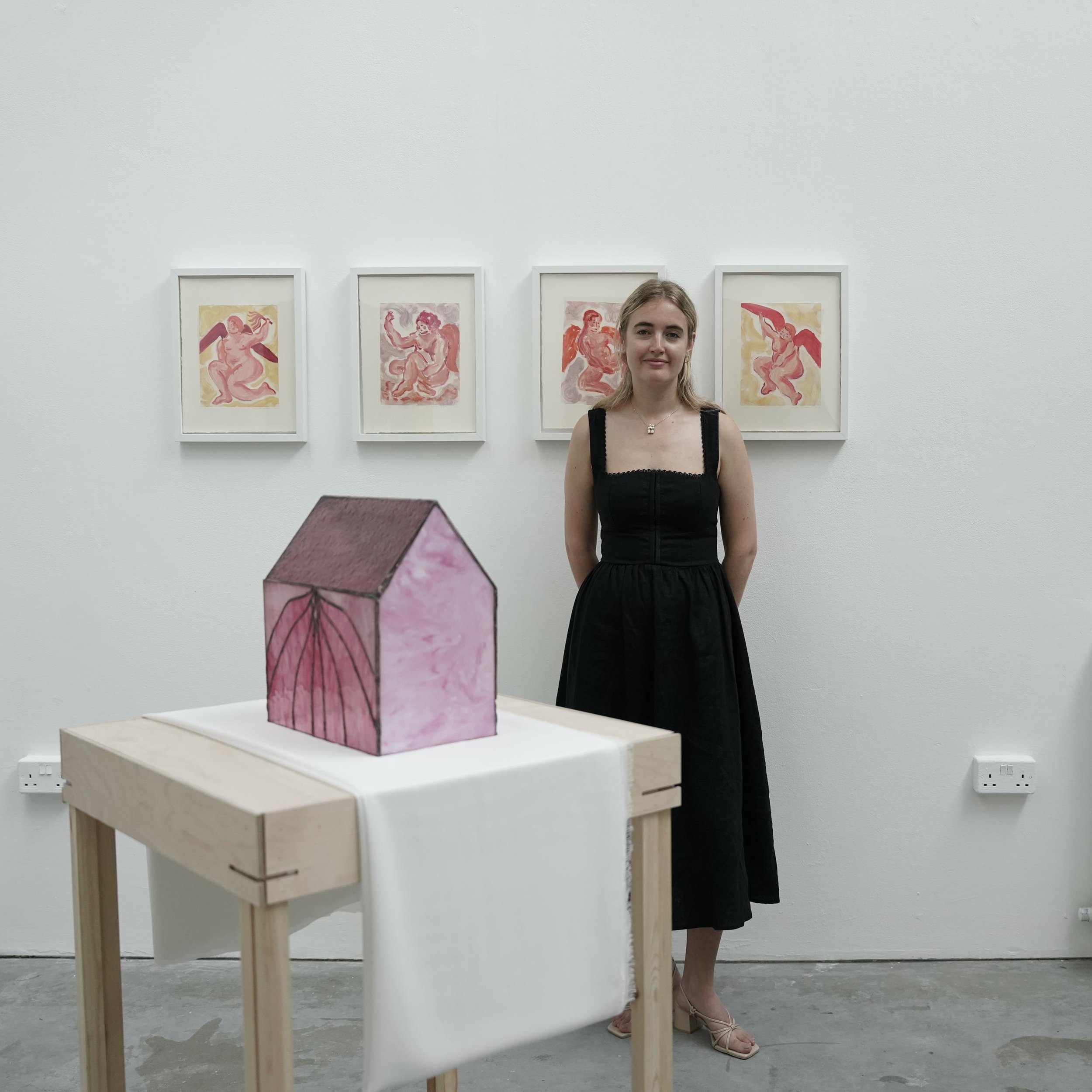“I imagine you haven’t heard of St Carmine. Her story has been hidden for years, buried underground and our expert team of archaeologists and anthropologists have only just begun to unravel the fascinating story of her life and times. Excavation of a small stone structure began in September last year, and we had no idea of the treasures held within. But I am excited to share these discoveries with you now, on the world’s stage, for the very first time.”
So began my Artist’s Talk, written back in January, as I started to piece together the first of two stained glass windows, depicting scenes from the mystical life of Saint Carmine. Saint Carmine, was created to fill a proverbial gap-in-the-market for a female saint of pleasure. In the history of Catholicism, chastity has typically been what female saints are remembered for. A great example of this is St Agnes, who is usually shown with a lamb, a symbol of her innocence, and a martyrs palm leaf, a symbol of her martyrdom. In a similar vein, there are particular signifiers that point to Saint Carmine, based on the narrative of her life. Legend has it that Saint Carmine discovered a large disembodied phallus in the wilderness, so she is commonly depicted cradling it in a pose evocative of the madonna and child. Cochineal beetles, which give her her name Carmine, and willow leaves that reference the tree she was miraculously conceived under, also crop up in her depictions and are an interesting means to identify her that take on more significance than her features.
Stained glass is used by the church to harness divine light, which can very physically alter the space with its colour and glow. A work by Bernini which I adore, is behind the altar of St Peter’s basilica, taking the natural qualities of light and amplifying it with golden stained glass and a wave of gold tumbling into the church space in a marriage of stained glass, painting and sculpture. I like the idea that an apocryphal Saint can use the artistic weapons of the catholic counter reformation for her own agenda.
There is an inherent subversion of a medium so associated with the religious being used to tell a slightly naughty story that toys with the levels of repression built into the architectures of churches themselves, breaking their ’sacred language’ for something perhaps more divine and truthful to appear.
The Annunciation and Assumption of Saint Carmine, Copper foiled stained glass, 2023
Cherubic Guardians, Monotypes on paper, 2023
The Reliquary of Saint Carmine, Copper foiled stained glass, 2023
All presented as part of the Royal College of Art MA Graduate Show, 30th June - 3rd July 2023






